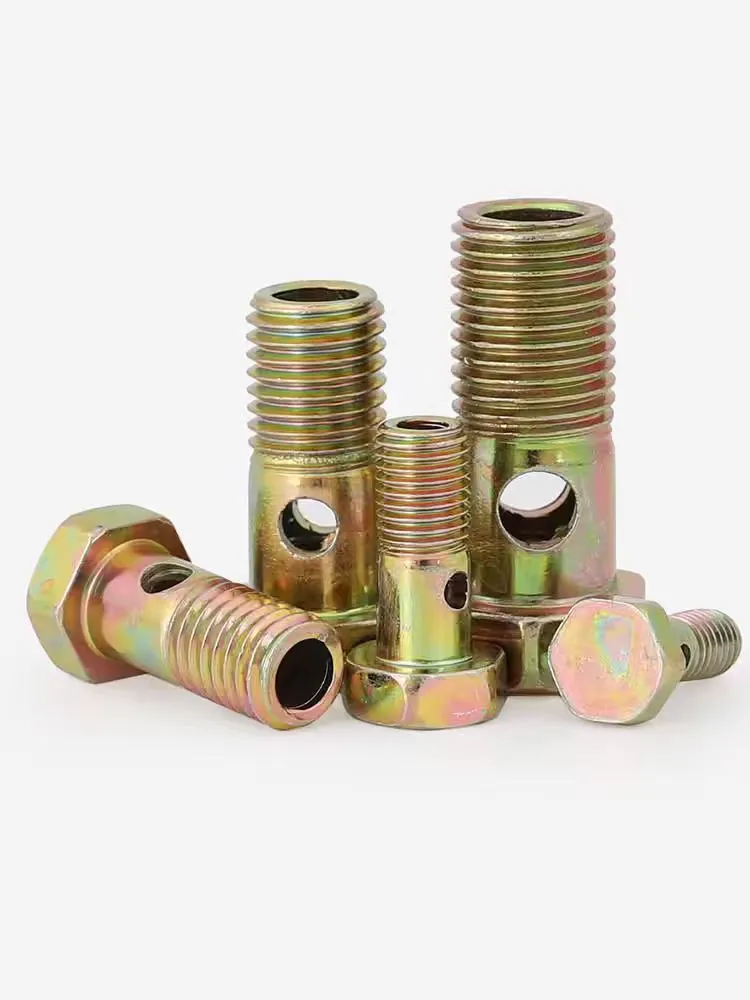

self tapping screw hole size metric
Dec . 05, 2024 00:25 Back to list
self tapping screw hole size metric
Understanding Self-Tapping Screw Hole Size in Metric
When it comes to fastening materials, self-tapping screws are a vital component in both industrial and DIY applications. These screws are designed to create their own hole as they are driven into a material, eliminating the need for pre-drilling in many instances. However, to achieve a reliable and strong connection, understanding the appropriate hole size for self-tapping screws is crucial. This article aims to elucidate the significance of hole sizes in metric measurements for self-tapping screws.
Key Characteristics of Self-Tapping Screws
Self-tapping screws feature a pointed tip and have threads that extend the entire length of the shaft, which allows them to thread themselves into a material. They are commonly used in materials such as metal, plastic, and wood, each requiring specific considerations for hole sizes. The effectiveness of a self-tapping screw largely depends on the diameter of the hole it is meant to fit into, the material being fastened, and the type of screw being used.
Importance of Hole Size
The hole size is fundamental in determining how well the screw engages with the material. If the hole is too small, the screw may not be able to penetrate, leading to stripping or snapping. Conversely, if the hole is too large, the screw may not hold securely, leading to a weak connection that could fail under load. Therefore, selecting the correct size hole for a self-tapping screw is essential to ensure optimal performance and longevity.
Metric Measurements
In many regions, including Europe and parts of Asia, metric measurements are standard. Metric screw sizes are denoted in millimeters (mm), which makes it easier for users to determine the appropriate sizes when dealing with self-tapping screws. For instance, a typical self-tapping screw might have a diameter ranging from M2 (2mm) to M12 (12mm) or even larger, depending on the application.
self tapping screw hole size metric

To determine the proper pre-drilled hole size for self-tapping screws, a common guideline is to use a drill bit that is slightly smaller than the screw’s outer diameter. For instance, if one is using a screw with a diameter of M4 (4mm), a drill bit measuring 3.5mm may be suitable for creating the pilot hole. This allows the screw to create its own thread without hindrance while providing enough grip within the material.
Factors Influencing Hole Size Decisions
Several factors need to be considered when deciding on the appropriate hole size for self-tapping screws
1. Material Type Different materials have varying levels of hardness and density. For instance, softer woods might require larger pre-drill holes than harder plastics or metals to facilitate easier entry. 2. Screw Design Self-tapping screws come in various designs and types, such as thread-forming and thread-cutting. The chosen design can impact the required hole size.
3. Application Requirements Load-bearing requirements can dictate the size of the hole and the type of screw used. For heavy-duty applications, a tighter fit may be necessary to sustain the load.
4. Environmental Conditions Factors like moisture, temperature fluctuations, and exposure to elements may affect the suitability of screw and hole sizes. Materials exposed to such conditions might contract or expand, necessitating careful sizing.
Conclusion
Choosing the correct self-tapping screw hole size is integral to ensuring a strong and secure fastening. By adhering to metric measurements and considering various factors such as material type, screw design, and application requirements, users can achieve optimal performance from their fasteners. Proper knowledge and application of these principles can significantly enhance the durability and reliability of any assembly or construction project. Therefore, whether it's for industrial use or home improvement, understanding self-tapping screw hole sizes is crucial for anyone involved in fastening techniques.
Latest news
-
Hot Dip Galvanized Bolts-About LongZe|High Strength, Corrosion Resistance
NewsJul.30,2025
-
High-Strength Hot Dip Galvanized Bolts - Hebei Longze | Corrosion Resistance, Customization
NewsJul.30,2025
-
Hot Dip Galvanized Bolts-Hebei Longze|Corrosion Resistance&High Strength
NewsJul.30,2025
-
High-Strength Hot-Dip Galvanized Bolts-Hebei Longze|Corrosion Resistance&High Strength
NewsJul.30,2025
-
Hot Dip Galvanized Bolts-Hebei Longze|Corrosion Resistance&High Strength
NewsJul.30,2025
-
Hot Dip Galvanized Bolts - Hebei Longze | Corrosion Resistance, High Strength
NewsJul.30,2025

